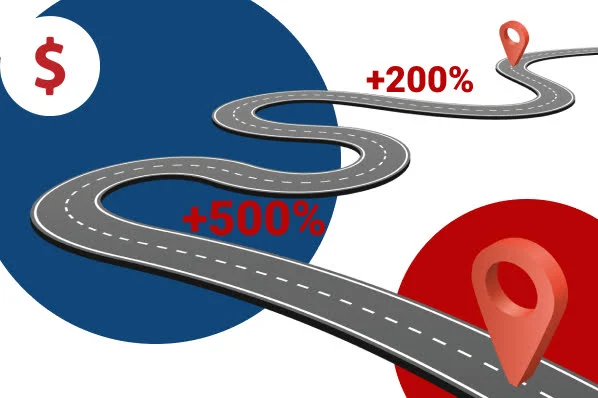
Search Engine Optimisation or SEO (Search Engine Optimisation) is the process of adapting HTML code, text content, website structure and control of external factors to the requirements of search engine algorithms in order to improve the position of the website in the search results of these systems for specific user queries. The higher the position of the site in the search results, the more likely it is that the visitor will go to it from search engines, because people usually go to the first links that appear in the first 10 search results, for example, in the services of Google, Yandex, Bing, Yahoo and others.

SEO optimization. Advertising and promotion
Search engines rank websites in search engine results based on a certain relevance factor (i.e. relevance) to a keyword query. There are over 200 ranking factors that SEO optimizer use to promote websites. By using and maximizing all of these 200 factors, it is possible to achieve a high quality website that meets the requirements of search engines. If you want to be pro in this topic, subscribe to us!
Methods of optimisation
Optimisation methods can be divided into three classes:
– White optimization – work on the resource without the use of officially prohibited by each search engine methods of resource promotion – without influencing the search algorithms of sites. You can find out about all the permitted methods of search engine optimisation directly from the search engines themselves;
– Grey optimisation – this can include the addition of a large number of keywords in the text of the page, often with a loss of readability for humans, repeated repetition of keywords a certain number of times in different cases, singular and plural, as well as different forms of verbs, etc;
– Black optimization is all the methods that contradict the rules of the search engines. Among them we can highlight the following: the use of dorveys (pages and resources created specifically for search engine robots, often with a large number of keywords on the page), a technique called cloaking (the user is given one page, easy to read, and the search engine robot – another, optimized for any queries), the use of hidden text on the pages of the site, the use of “one-pixel links”, etc.
Briefly about SEO optimisation of websites
In general, if a site is built from the outset according to generally accepted recommendations and in accordance with the current HTML5 specification, which passes validation without errors or warnings when checked by the validator, the site will already be perfectly located by various search services, in particular such as Google or Yandex. And although a correctly configured and validated site does not mean that it will appear in the top 10 search results for relevant queries and according to a particular site theme, it does guarantee its possible success in indexing and appearance in search results, even if not in the top ten.
And, of course, in order for the site to appear in the top 10 search results, it is necessary to pay due attention to its SEO optimisation , with the adoption of all the necessary measures for its promotion and promotion. This is especially true for commercial sites whose owners want to use the site to earn money and make a profit at the expense of Internet users.
Some SEO optimizers use methods of search engine optimisation that are not always “honest”, when thanks to artificially added keywords or phrases on the pages of such a site gets into the top 10 search results, but the site itself does not contain any useful information for users. Nowadays, such “black” methods of SEO are well recognised by search engines, which even block such sites and generally exclude them from their search results.
However, any webmaster, web developer or web designer who works directly with HTML code can carry out SEO optimisation of the site for search engines themselves, using very simple but very effective methods to get into the top 10 search results. It is only necessary to follow certain rules and recommendations given by the search engines themselves, such as Google, Yandex, Yahoo, Bing and others. Below are just a few, but the most important recommendations and requirements for SEO optimization of sites and, as a result, their possible entry into the top ten search results.

Some recommendations for SEO optimization:
- Use the original text on the site, which is not available anywhere else on the Internet;
- The length of the title tag <title> should be from 10 to 70 characters (together with spaces);
- The length of the description meta tag must be within 70 – 320 characters (together with spaces);
- Use the required alt attribute for images;
- Use the title attribute for images;
- Use only one <h1> tag per page;
- Use text length between <h1>-</h1> tags no more than 70 characters (with spaces);
- Use a limited number of titles with <h2>-<h4> tags on the page (recommended within 2-5);
- Use a code/text ratio of no more than 20% (recommended no more than 10%);
- Use key (thematic) words evenly across the content of the page;
- Use the <strong> and <em> tags to highlight keywords in the content moderately and evenly on the page;
- Use the number of highlighted keywords no more than 3-4% of the total amount of text;
- Use at least 500 characters on the main content page;
- The text must contain keywords that are in <h1>, <title>, description;
- Set the correct language of your page (site), which has the most content created in the <html lang=”ru”> tag (for example, Russian);
- Be sure to specify the UTF-8 page encoding (this is the best option);
- Make the URL more understandable to people and search engines (according to the content of the site or page);
- Use XML Sitemap Sitemaps;
- Use the robots file.txt;
- Use Favicon (icon) for the website;
- Use micro-markup – dictionaries schema.org – which are read by machines;
- Use Open Graph Protocol markup tags (for social networks);
- Place the 404 error page in the root of the site;
- Use no more than 3 external links on the page;
- Use an attribute with the value rel=”nofollow” for external links that should not be indexed;
- Use linking inside the site (links from one page to another, but no more than one or two links per page);
- Use one link to the main page of the site on each secondary page;
- Use code compression (compression of HTML/CSS/JS files);
- Optimize images (reduce the size as much as possible);
- Use Mobile Viewports (optimization for mobile devices);
- Use the analytics tracking tool (Google Analytics, Yandex-metrica);
- Make the size of active elements optimal (link size for small screens);
- The weight of any web page with all elements should not exceed 100 Kbytes (preferably up to 50 kbytes);
- There should be no more than 50 links from one page to other pages of the site;
- When clicking on the website logo, there should be a transition to the main page of the website from any other page;
- When linking with an anchor, links must be made using a word or phrase that will correspond to the topic.
________________________________________
Additional SEO optimization
- Register your site in search services (Google, Yandex, Bing, Meta, etc.) and in different site directories;
- Maximize the number of active links to your site (or to its individual pages) from other sites;
- Encourage users to visit your site (using the link to the site in social networks);
- Use the main query (or keywords) in the first and last paragraph of the text. Remember, paragraphs should be no more than 4 lines;
- Use markers and lists, highlighting important parts by numbering or bold (<strong> tag);
- Add like buttons to the site, repost to any of the social networks.networks that will attract the attention of new users.
________________________________________
WHAT NOT TO DO WITH SEO OPTIMIZATION:

- Do not abuse the number of keywords on the page;
- Do not overuse the number of words highlighted with <strong> or <em> tags;
- The amount of HTML code should not exceed 20% of the total page weight;
- Do not put circular links on the page (which link to the same page);
- Do not use underscores in urls (address_site by strikethrough) unless absolutely necessary;
- Do not allow broken (empty, broken) links on the page;
- Do not set the email address on the page as plain text;
- Do not use or try to use minimally embedded styles (CSS inline);
- Do not use or try to use minimal JavaScript scripts on the page;
- Do not use Flash unless absolutely necessary;
- Do not use iFrames unless absolutely necessary;
- Do not hide the text from keywords using a very small font or the background color of the page. Search services quickly recognize this and bypass such sites.
A higher search engine ranking increases the site’s credibility and visibility, helping it stand out among competitors and reach potential customers effectively.
You can learn more read about this here.
Author
-

Alisha is the Editor-in-Chief of Search Engine Journal. Before that, she covered tech for News & Trends, content editing, and social strategy at AdClickAgency. Alisha holds a BA in English and Journalism from Mount Holyoke College and an MBA in Marketing from San Francisco State University. Her work has also appeared in Thrillist, the Boston Herald, and EcoSalon, and she's based in St. Petersburg, Florida.
View all posts







